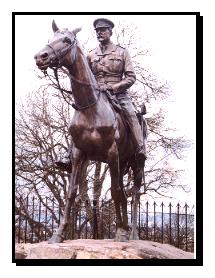
Famous Scots
- Earl Haig (1861-1928)

Douglas Haig was born in Edinburgh on 19 June, 1861, the youngest son of an ancient Fife family. After Oxford and Sandhurst, he fought in the South African War under Lord Kitchener. He went to France in August 1914 and took part in all the early battles of the First World War.In December 1915 he became the commander-in-chief of all the British forces in France, a position he held till the end of the war. He was regarded as a calm optimist but because of his shyness he never addressed his troops and indeed was not often seen by them.
He won a number of decisive battles, including Mons and Ypres during the conflict (but at a huge cost in dead and wounded). He introduced tanks for the first time in 1916 and it was his assault on the Hindenburg Line which finally brought the war to a close in 1918.
He was made an Earl in 1919 and devoted the rest of his life to caring for the wounded and bereaved - he founded the charity British Legion in 1921. He died on 29 January 1928 and, at his request, was buried in Dryburgh Abbey, near his estate of Bemersyde. Instead of a large expensive memorial, he insisted on having a simple headstone like the many who were buried on the battlefields of France. The statue to him (shown above) on the esplanade of Edinburgh Castle was donated by a Bombay parsee, Sir Dhumjibhoy Bomanzi.
Return to the Index of Famous Scots
Where else would you like to go in Scotland?

